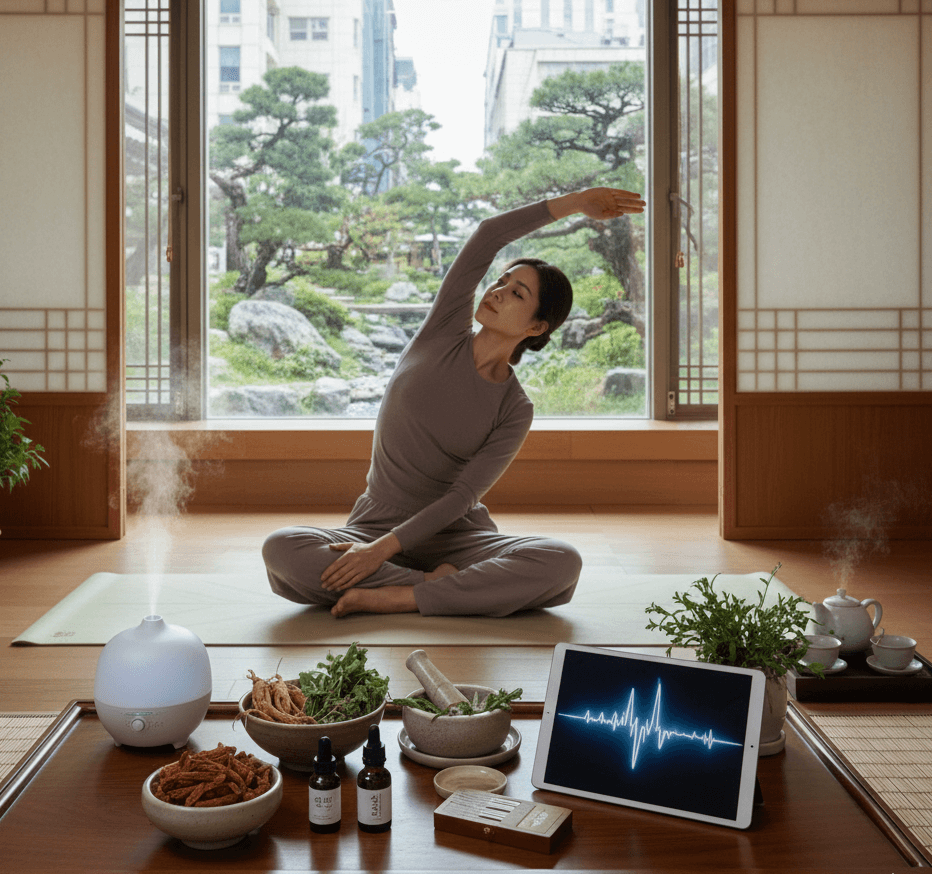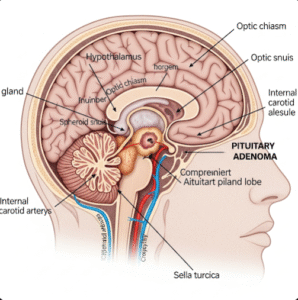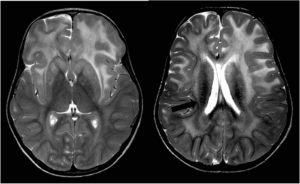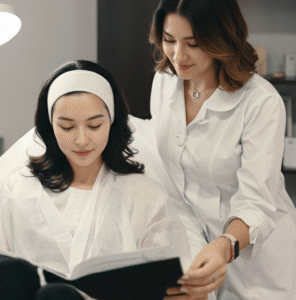Ancient Wisdom Meets Modern Health
For centuries, Traditional Korean Medicine (TKM) has been a core part of Korean culture, focused on prevention, balance, and natural healing. It views health as the result of harmony between the body, mind, and environment.
Today, this ancient practice has become a key part of modern wellness, offering natural and holistic solutions for stress, chronic illness, and everyday vitality. With its blend of herbal knowledge, mindful living, and body therapies, TKM is proving timeless in its effectiveness.
➤ Understanding the Foundations of Traditional Korean Medicine
Traditional Korean Medicine is built on the idea that the body’s systems work together in balance. When this balance is disturbed — by stress, diet, or environment — illness can occur.
Core principles include:
➤ Yin and Yang Balance: These two energies must remain in harmony for good health. Too much heat (Yang) or cold (Yin) can lead to sickness.
➤ Qi (Energy Flow): Qi is the life force that moves through energy channels called meridians. Smooth, balanced flow means vitality; blockage leads to pain or disease.
➤ Five Elements Theory: Wood, Fire, Earth, Metal, and Water correspond to organs, emotions, and seasons — all interconnected within the body.
Lifestyle wisdom: Instead of waiting for illness, TKM encourages recognizing early signs like fatigue, digestive upset, or emotional stress, and addressing them through food, rest, or herbs.
➤ Herbal Medicine: Nature’s Healing Power
Herbal remedies are the heart of Korean traditional medicine. Each formula combines plants, roots, seeds, and minerals tailored to the individual’s needs.
Common healing herbs include:
➤ Ginseng (Insam): Increases energy, focus, and immunity.
➤ Ginger (Saenggang): Warms the body and supports digestion.
➤ Licorice Root (Gamcho): Soothes inflammation and balances other herbs.
➤ Jujube (Daechu): Calms the nervous system and nourishes blood.
➤ Angelica Root (Danggui): Supports women’s health and circulation.
Modern application: Many Korean wellness products — from teas to supplements and skincare — use these herbs for their anti-inflammatory and rejuvenating properties.
Lifestyle tip: Drinking a cup of ginseng or jujube tea daily can help reduce stress and fatigue naturally.
➤ Acupuncture and Moxibustion
Acupuncture is one of the most recognized aspects of Korean traditional medicine. It involves inserting fine needles into specific energy points to restore balance and promote healing.
➤ It improves blood circulation, relieves pain, and reduces stress.
➤ Commonly used for insomnia, back pain, migraines, and anxiety.
➤ Korean acupuncture often uses thinner needles and gentler techniques for comfort.
Moxibustion, another TKM therapy, burns dried mugwort (ssuk) near acupuncture points to warm the body and stimulate energy flow.
Lifestyle benefit: These treatments enhance the body’s natural recovery process and are especially effective for fatigue, menstrual pain, and tension-related headaches.
➤ Healing Through Food
In TKM, food is considered medicine. The concept of “Yaksikdongwon” — meaning “food and medicine come from the same source” — guides Korean eating habits.
➤ Meals are planned around Yin and Yang balance. Cooling foods (tofu, cucumber) calm internal heat; warming foods (garlic, ginseng) strengthen energy.
➤ Seasonal eating ensures the body receives the right nutrients year-round.
➤ Fermented foods like kimchi, doenjang, and gochujang improve gut health and strengthen immunity.
Lifestyle tip: Start your day with a warm meal, such as soup or porridge, instead of cold foods. Warm digestion equals stronger overall energy.
➤ Emotional and Mental Balance
Traditional Korean Medicine teaches that emotions are closely linked to physical health. Prolonged stress or sadness can weaken specific organs and lead to illness.
Emotional connections in TKM:
➤ Anger affects the liver.
➤ Worry weakens the stomach.
➤ Fear impacts the kidneys.
➤ Sadness burdens the lungs.
To maintain balance, Koreans practice meditation, breathing exercises, and gentle movement like Taekkyeon or Tai Chi.
Lifestyle benefit: A calm, balanced mind supports proper energy flow, strong immunity, and clear thinking — essential for both mental and physical wellness.
➤ Korean Hand Therapy and Meridian Exercises
Korean wellness also features unique techniques like Koryo Hand Therapy, which treats the hand as a miniature version of the body.
➤ Stimulating points on the hand can relieve pain, stiffness, or fatigue elsewhere.
➤ Meridian stretching combines breathing with slow movement to enhance flexibility and reduce tension.
Lifestyle tip: Gentle hand massage or acupressure during the day can improve energy and relieve stress without any equipment.
➤ Integrating Traditional and Modern Medicine
South Korea has successfully combined traditional and modern healthcare systems. Many hospitals now include both TKM doctors and Western medical specialists.
➤ Patients often receive acupuncture or herbal therapy alongside conventional treatments.
➤ TKM is used to manage chronic conditions like arthritis, insomnia, digestive disorders, and menopausal symptoms.
➤ The government supports research that scientifically validates herbal and acupuncture therapies.
Modern insight: Studies have shown that integrating TKM with Western medicine can improve recovery rates, reduce side effects, and enhance mental wellbeing.
➤ The Role of TKM in Today’s Wellness Culture
Globally, wellness trends are now reflecting traditional Korean values: balance, prevention, and natural healing.
➤ Herbal teas, mindfulness, and clean diets are increasingly popular.
➤ Korean spas (jjimjilbangs) combine relaxation with detoxification — a modern form of energy cleansing.
➤ Digital wellness apps now include breathing exercises and herbal diet plans inspired by TKM.
Lifestyle wisdom: Traditional Korean Medicine isn’t just a medical system; it’s a philosophy that teaches us to live in harmony with nature and our own bodies.
➤ How to Incorporate Korean Wellness into Daily Life
You don’t have to live in Korea to enjoy the benefits of TKM. Small, consistent changes can make a big difference.
➤ Start your day with warm water or tea to wake up your digestion.
➤ Add ginger, ginseng, or jujube to your diet for natural vitality.
➤ Practice mindful breathing or gentle stretching to balance your energy.
➤ Get regular sleep and rest — a key principle in maintaining strong Qi.
Lifestyle tip: Think prevention, not reaction. Listen to your body, adjust your habits, and care for your health before imbalance turns into illness.













